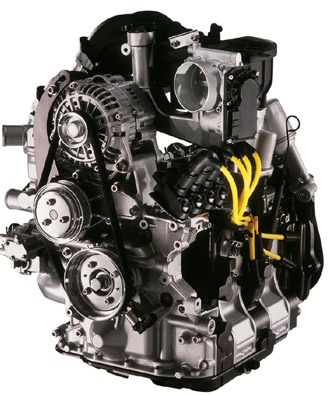Rotary Engine Assembly
Rotary Engine Assembly
By JAMES B. TREECE | Automotive News
HIROSHIMA, Japan - It is a surprisingly low-tech finale for such a high-tech process.
In a sealed, soundproofed and temperature-controlled room at Mazda's engine plant No. 2 here, parts that elsewhere have been engineered and manufactured using computers are painstakingly assembled by hand into the Renesis engines that power the RX-8.
Working with palpable concentration, seven workers hand-assemble rotors, housings, eccentric shafts, stationary gears, seals, bolts and other parts into the final engine. Time per engine: 35 to 40 minutes.
Executives say production could be speeded up but declined to give specifics.
"We could automate it. The question is cost," said Hisakazu Imaki, Mazda's executive vice president and chief engineering and manufacturing officer.
Although it is possible for computer technology to emulate the workers' craftsmanship, doing so would be hugely expensive, he said.
The new Renesis rotary engine features a number of design changes that allowed Mazda to eliminate the turbocharger that had pushed up the price of the former RX-7's rotary engine.
While incorporating those design changes, Mazda introduced several manufacturing changes as well. Here are two:
1. To cast the rotor, which is shaped like a triangle with slightly rounded corners, Mazda in the past poured molten metal into the top of a mold designed to produce two stacks of three rotors each. But the metal cooled at different speeds in different parts of each rotor, leading to different weight distributions.
The weight differences were slight, less than the weight of two pennies, but enough to cause an uneven rotor rotation. Mazda had to drill tiny holes in the rotor to rebalance it, an inelegant solution at best.
Now, Mazda uses a mold that makes only three rotors at a time and pours the molten metal into the center of the rotor. From there, it spreads out evenly toward the three points of each triangular rotor and the cooling occurs evenly in each point.
2. Testing has been computerized. One engine out of every 100 is sent to a coordinate measurement room, where precision equipment measures the dimensions of each part to ensure that all of the drilling and machining is exact. Formerly, tests of the RX-7 engine included a master operator rotating the engine's rotor to feel whether it seemed balanced.
Every engine is tested after assembly. The tests include one that measures compression in each stage of the engine's cycle: intake, fuel compression and exhaust.
To demonstrate to a group of reporters the reduced vibrations of the new engine, testers placed a glass of wine atop an engine, then revved it to 5,000 rpm, which they said would be the typical speed on a Japanese highway.
The wine barely rippled.
